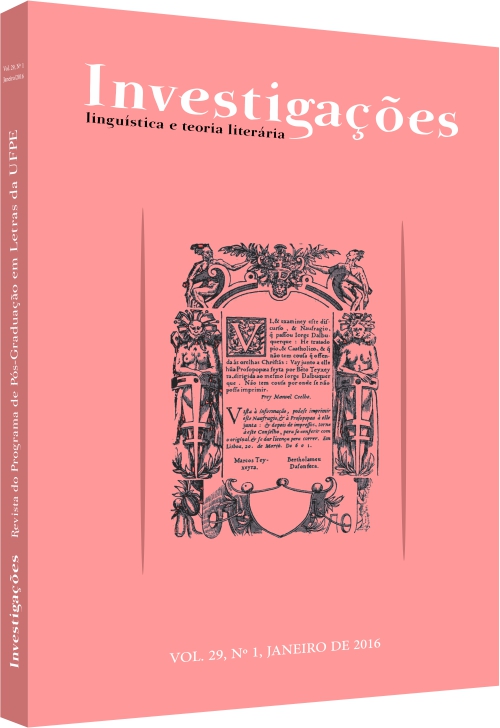O Neorrealismo Literário Português na Crítica de José Rodrigues de Paiva
Abstract
Breve investigação das leituras críticas que José Rodrigues de Paiva realiza da configuração do Neorrealismo Literário em Portugal, em articulação à visão sustentada pelo escritor português Vergílio Ferreira, objeto de estudo privilegiado do analista em foco.
References
CANETTI, E. O Jogo dos Olhos: história de uma vida: 1931-1937. S. Paulo: Companhia das Letras, 1990.
COELHO, J. do P. Limiar. In: ______. Ao Contrário de Penélope. Venda Nova: Bertrand, 1976. p. 7-14.
FERREIRA, V. Prefácio do Autor à 2.a Edição. In: ______. Vagão “J”. 2. ed. Lisboa: Arcádia, 1974. p. 7-40.
MUKAROVSKY, J. A Arte como Fato Semiológico. In: GUINSBURG, J. (Org.). Círculo Linguístico de Praga. S. Paulo: Perspectiva, 1978. p. 63-72.
NAMORA, F. Prefácio. In: ______. Casa da Malta. 13. ed. Mem Martins: Europa-América, 1988. p. 13-32.
PAIVA, J. R. de. A Ficção Neorrealista Portuguesa e o Romance Nordestino de 30: apontamentos para um estudo comparativo. In: ______. As Surpresas do Mágico: & outros ensaios. Recife: Encontro, 1985. p. 67-82.
______. O Espaço-Limite no Romance de Vergílio Ferreira. Recife: Encontro, 1984.
REIS, C. (Sel.). Textos Teóricos do Neorrealismo Português. Lisboa: Seara Nova; Comunicação, 1981.
RODRIGUES, S. M. C. V. Polémica em Torno de Rumor Branco de Almeia Faria: discurso e contradiscurso. Porto: [s.n.], 1998.
Downloads
Published
How to Cite
Issue
Section
License
Copyright (c) 2016 Antony Cardoso Bezerra

This work is licensed under a Creative Commons Attribution 4.0 International License.
Authors who publish with Revista Investigações agree to the following terms:
Authors retain copyright and grant the journal right of first publication with the work simultaneously licensed under the Creative Commons Attribution 4.0 International (CC BY 4.0) license that allows others to share the work with an acknowledgement of the work's authorship and initial publication in this journal.
Authors are able to enter into separate, additional contractual arrangements for the non-exclusive distribution of the journal's published version of the work (e.g., post it to an institutional repository or publish it in a book), with an acknowledgement of its initial publication in this journal.
You are free to:
Share — copy and redistribute the material in any medium or format for any purpose, even commercially.
Adapt — remix, transform, and build upon the material for any purpose, even commercially.
The licensor cannot revoke these freedoms as long as you follow the license terms.
Under the following terms:
Attribution — You must give appropriate credit , provide a link to the license, and indicate if changes were made . You may do so in any reasonable manner, but not in any way that suggests the licensor endorses you or your use.
No additional restrictions — You may not apply legal terms or technological measures that legally restrict others from doing anything the license permits.

